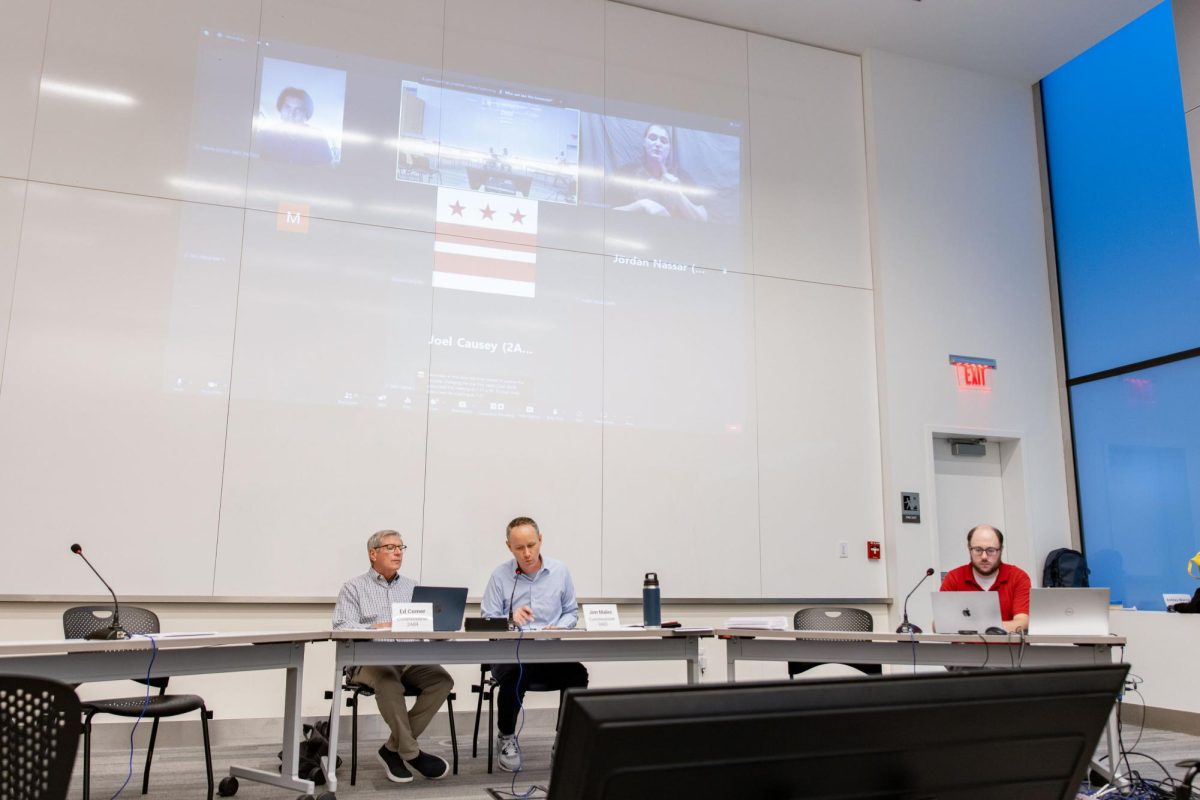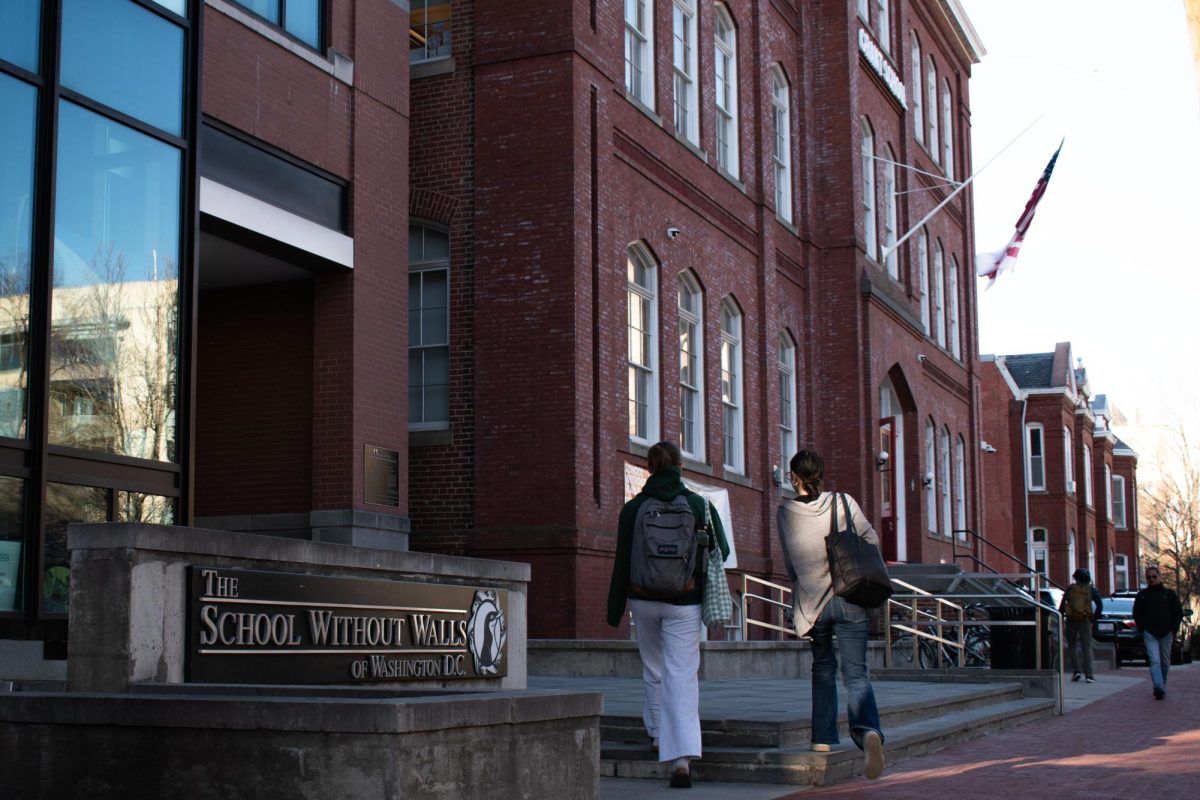A series of barriers blocking Virginia Avenue’s new-but-yet-to-be-completed bike lane has become a focal point of controversy among the local community and the District Department of Transportation about safe cycling in the neighborhood.
Locals noticed DDOT placed 10 barriers at intersections along Virginia Avenue from G to 20th streets earlier this month to block access to the bike lane in areas that still need functioning traffic signals, which would help protect pedestrians from oncoming bikers. Bikers have been seen using the bike lane since DDOT installed the path – located in the middle of the Virginia Avenue thoroughfare – in December, but agency officials tweeted around the same time that the project was “not quite complete.”
Some local leaders – like Joel Causey, the chair of the Foggy Bottom and West End Advisory Neighborhood Commission – said the bike lane’s opening was unsafe and “premature” without functioning traffic signals designed to control traffic that bikers, pedestrians and motorists share on the street. DDOT has received backlash for failing to respond to calls from locals to install a traffic signal at the corner of 21st and I streets before cyclist Shawn O’Donnell died in a collision with a truck driver last month while the intersection was still uncontrolled.
“It’s a safety risk to have the bike lanes operational without the lights working,” ANC Chair Joel Causey said in an interview.
The barriers blocking the lane force cyclists to ride on the sidewalk or alongside Virginia Avenue traffic. DDOT did not immediately return a request for comment on the placement of the barriers in the bike lane or the timeline of the bike lane’s completion.
As of Sunday afternoon, Aug. 28, the majority of the barriers blocking the bike lane have been pushed out of the way for cyclists to enter and exit. Two of the structures at Virginia Avenue and D Street remain obstructing the bike lane.
Local residents and ANC commissioners have debated whether DDOT should have opened or blocked the bike lane as the project’s end date remains unclear after months of delays. The project was slated to wrap up back in March after DDOT first announced plans for the bike lane in February 2021.
Last month, the ANC unanimously voted to request that DDOT address pedestrian and driver safety along several intersections on Virginia Avenue, citing concerns over the short crosswalk signal times which they said could put elderly and disabled pedestrians at risk.
“I believe that in a rush to get the bike lanes in and claim victory for bike lanes, they failed to understand that we have constituents who are elderly,” Causey said at the meeting.
The ANC also asked for a timeline of the bike lane’s completion and a DDOT analysis of the pedestrian conditions, like crosswalk times and safety, at the avenue’s intersections.
“One of the complaints from the citizens is that they’re trying to cross there,” Causey said. “There’s no pause. Bikes are flying by at high speed, and here’s a person with a walker and a wheelchair and they have a fear of getting hurt.”
Causey said DDOT will update the ANC during its meeting in September and anticipates the barriers will remain in the bike lanes until the agency finishes installing the signals. He said bikers should remain “vigilant” in the meantime of their surroundings and exert more caution on busier streets like Virginia Avenue.
“I know this is a very passionate issue for a lot of bicyclists out there,” Causey said. “They want the lanes open, but they have to understand that it has to be done in a safe manner.”
ANC Commissioner Yannik Omictin said the barriers were an “overreaction” by DDOT because they force bikers on Virginia Avenue to either merge with traffic or ride on the sidewalk, creating hazardous conditions alongside either speeding vehicles or walking pedestrians.
“Obviously biking in traffic is very dangerous for Virginia Avenue,” Omictin said. “And biking on the sidewalk is exactly what folks were saying is not a good thing, and this is one of the reasons why we have this bike lane in the first place.”
Omictin said as of Thursday he has not been able to contact DDOT to discuss the barriers. He said while he understands the bike lanes remain incomplete, the protected bike lanes are “much safer” for residents than the alternative, even without the extended signal times.
“Just in the state it is right now, it is safer for cyclists, it’s safer for cars and it’s safer for pedestrians because there’s at least a separation,” he said.







